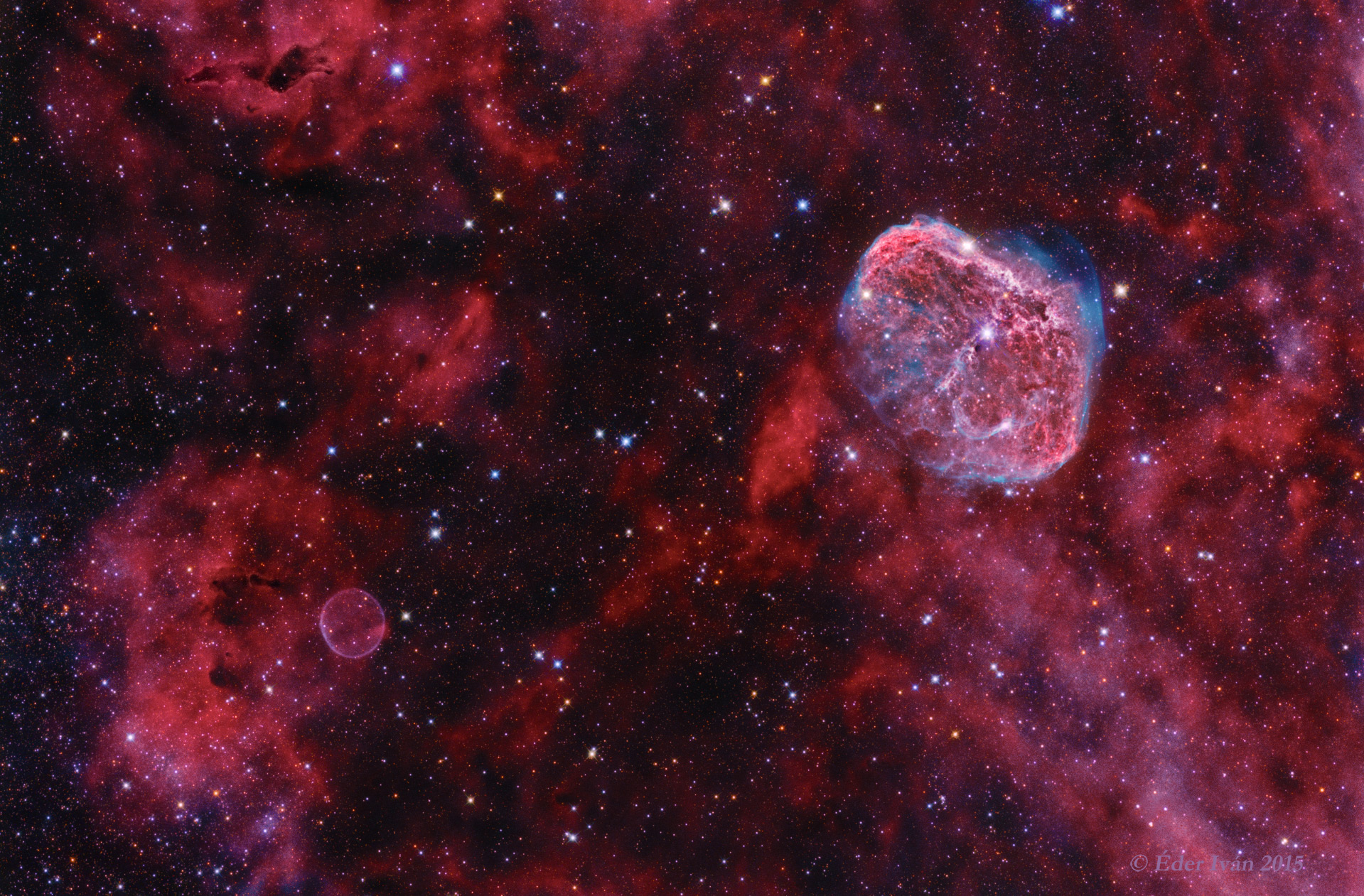Massive stars and low-mass stars live different lives. They are born in different environments, fuse different elements during the course of their lives, release different amounts of radiation across the electromagnetic spectrum, die in different ways, and enrich interstellar space with different metals. We see stars at all stages of life in the galaxy, and their study allows us to piece together how stars form, and how the rarest ones are different.

The image above shows two distinct clouds, both about 5,000 light years away in the constellation Cygnus, along the Galactic plane. The smaller bubble on the left, literally called the soap bubble, shows what is most likely a planetary nebula, the end of the life of a sun-like star, shedding it’s outer layers into space and becoming a white dwarf.
The larger structure on the right shows what we call the Crescent Nebula, the result of a massive outpouring of material from a Wolf-Rayet star. Wolf-Rayet stars are more than 20 times the mass of the Sun, and are rapidly shedding material into space with strong stellar winds. They don’t last very long, about 100,000 years as they shed material, and often end their lives in massive supernova explosions.
Because Wolf-Rayet stars blast away material so quickly and don’t live very long, there aren’t very many found in any given galaxy. Though there are entire galaxies made of these stars, like the one below, SBS 1415+437. These Wolf-Rayet galaxies are changing rapidly and undergoing what we call a starburst, forming stars at an incredible rate and using up whatever gas and dust is left.

Studying the rarest stars teach us the extreme cases for star formation, helping us to understand the rare star forming environments. We already know how most stars form and evolve, but the rare ones offer us new territory.
